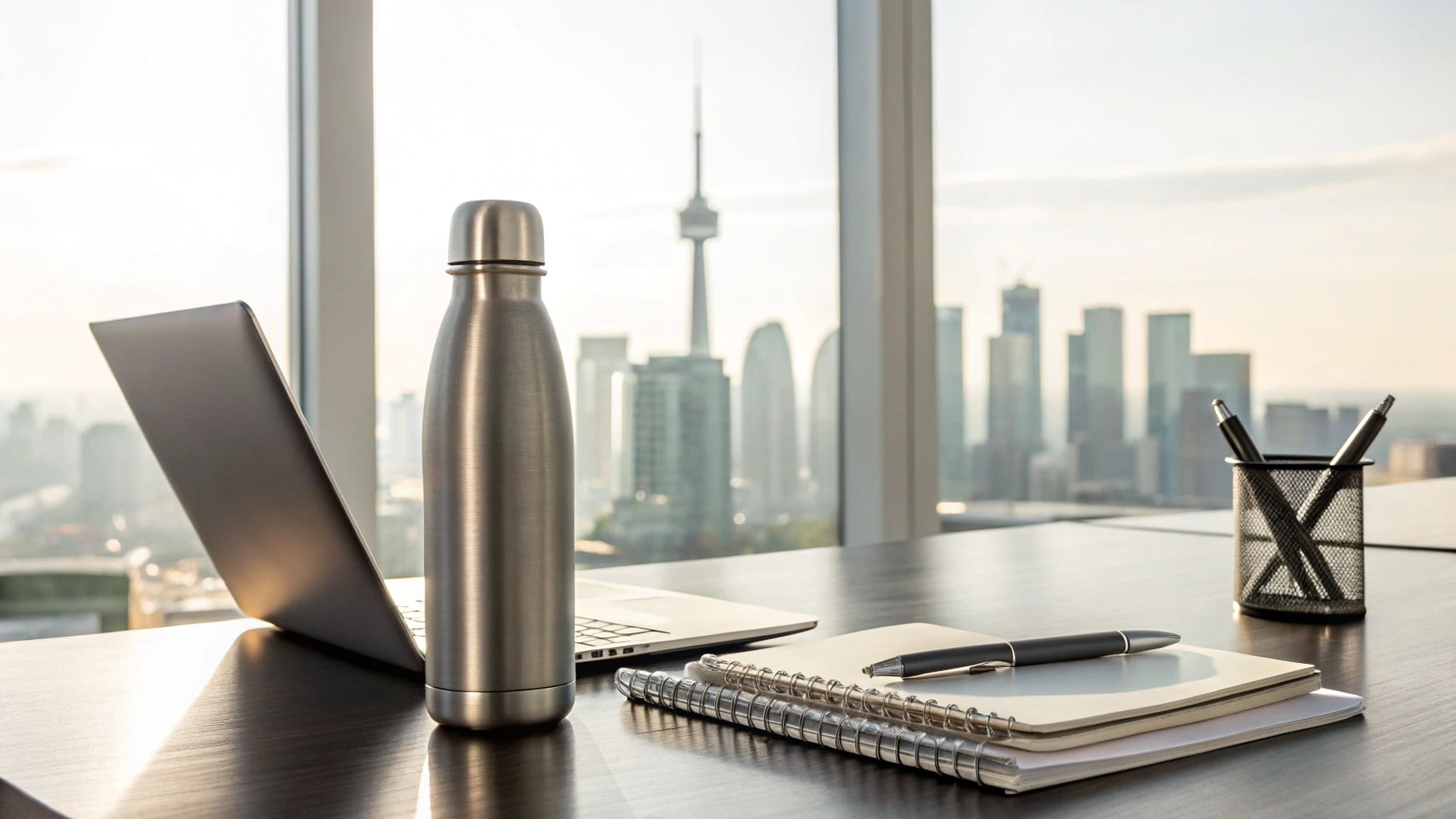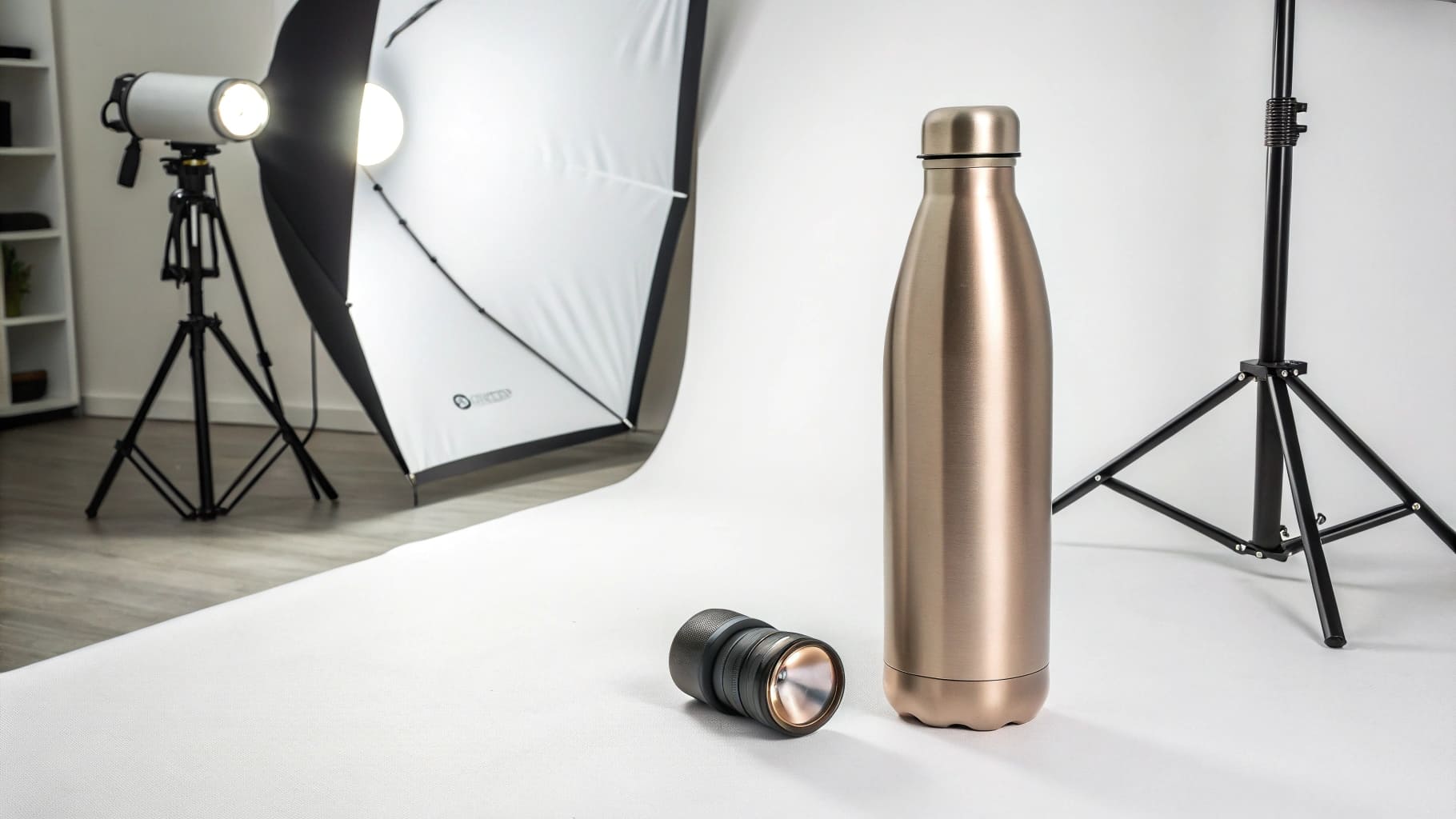Drinks get warm too fast? Annoyed by lukewarm coffee or water? Insulated bottles keep drinks perfect for hours. They are a game-changer.
Yes, insulated water bottles are worth it. They keep drinks hot or cold for a long time. They are also better for the environment than plastic.

You might be wondering what makes these bottles so special. And why are they often talked about? Let's look into this more. I think you'll find the answers interesting.
What is the difference between insulated and non insulated water bottles?
Confused by bottle types? Don't know which one to choose for your business? Choosing wrong means unhappy customers and wasted money for you. Understanding the difference helps you pick the best bottles.
Insulated bottles have two walls with a vacuum. This keeps drinks hot or cold. Non-insulated bottles have only one wall. They don't hold temperature well.

Okay, let's break this down. When I talk to clients like Mark, who buys stainless steel water bottles for his business in Canada, this is a key point. He needs to explain the value to his customers.
How Insulation Works
The main magic is something called double-wall vacuum insulation.
- Outer Wall: This is the part you hold.
- Inner Wall: This wall holds your drink.
- Vacuum Space: Between these two walls, we suck out all the air. No air means heat can't easily travel in or out.
Think of it like this: a non-insulated bottle is just a simple container. It's usually a single layer of metal or plastic. It will protect your drink, but the outside temperature will quickly change your drink's temperature. So, hot coffee gets cold fast. Iced tea gets warm.
But an insulated bottle is different. We at Icobottle often use high-quality 304 or even 316 food-grade stainless steel1 for both walls. This material is strong and safe for drinks. The vacuum seal is critical. If that seal breaks, the insulation is gone. That's why quality manufacturing is so important. For B2B buyers, offering bottles that truly keep drinks hot for, say, 12 hours, or cold for 24 hours, is a huge selling point. It’s not just a bottle; it’s a performance product.
Here's a simple table:
| Feature | Insulated Bottle | Non-Insulated Bottle |
|---|---|---|
| Construction | Double-wall with vacuum seal | Single-wall |
| Material (common) | 304/316 Stainless Steel | Stainless Steel, Plastic, Glass |
| Temperature Hold | Excellent (hours) | Poor (minutes) |
| Condensation | No (or very little) | Yes (with cold drinks) |
| Primary Use | Maintaining drink temperature, daily use | Basic liquid containment |
This clear difference in performance is why consumers are willing to pay more. They see the value in a drink that stays just right. As a B2B supplier, I always emphasize that this perceived value is crucial. Consumers understand that an insulated bottle isn't just for holding liquid; it's for enhancing their daily experience, whether it's a hot coffee on a cold commute or icy water during a summer hike. This enhanced user value directly translates to market demand.
Why you should stop buying plastic water bottles?
Still using plastic bottles? Worried about waste and what's in them? Plastic pollutes our planet. It might even affect your health. Switching to reusable bottles is a smart and healthy choice.
You should stop buying plastic bottles because they harm the environment. They create tons of waste. Reusable bottles, like stainless steel ones, are much better.

This is a big topic, and I see it influencing purchasing decisions a lot, especially with clients from America and Europe. They tell me their customers are asking for sustainable options.
The Problem with Plastic
Single-use plastic water bottles are a huge environmental issue.
- Waste: Millions of these bottles end up in landfills and oceans every year. They take hundreds of years to break down.
- Pollution: They break into tiny pieces called microplastics. These get into our water, soil, and even the food chain.
- Resource Drain: Making plastic bottles uses a lot of oil and water.
I remember visiting a beach on a trip once, and it was heartbreaking to see so much plastic debris washed ashore. It really brought home the scale of the problem. This visual is something many consumers now carry with them.
Beyond the environment, there are health concerns.
- Chemicals: Some plastics, especially older or cheaper ones, can contain chemicals like BPA (bisphenol A). These can leach into the water, especially if the bottle gets hot. Studies have linked BPA to some health problems.
- Microplastics: We are now learning that we might be drinking microplastics from bottled water. The long-term effects are still being studied, but it's a worry for many.
For businesses, this consumer shift is an opportunity. Offering high-quality, reusable stainless steel bottles2, like the insulated ones we've discussed, taps into this desire for better alternatives. My client, Mark, has noticed this. He finds that promoting the eco-friendly aspect of his rebranded stainless steel bottles really resonates with his Canadian customers. It’s not just about the function of keeping drinks cold; it's about making a responsible choice. This is why the demand for durable, reusable, and safe insulated bottles is growing. It's a direct response to the downsides of single-use plastics. The shift is clear: consumers are increasingly rejecting single-use plastics due to these very real environmental concerns and potential health impacts.
Here's why stainless steel is a great alternative:
| Aspect | Single-Use Plastic Bottles | Reusable Stainless Steel Bottles |
|---|---|---|
| Reusability | Designed for one use | Designed for years of use |
| Durability | Fragile, easily crushed | Very durable, can last a long time |
| Environmental | Major source of pollution and waste | Reduces waste, long lifespan |
| Health | Potential for chemical leaching (BPA), microplastics | Inert, no chemical leaching (food-grade) |
| Temperature | No insulation | Can be insulated (maintains temp) |
This shift is more than a trend; it's consumers demanding better for themselves and the planet. For B2B clients, this means adapting product lines to meet this tangible market need.
Why are water bottles so expensive now?
Shocked by water bottle prices? Wondering if they are truly worth it? High prices can make you hesitate. You want good value for money. Understanding the costs shows why quality bottles have higher prices.
Water bottles, especially good insulated ones, are more expensive now. This is due to better materials, complex manufacturing, and features like keeping drinks hot or cold.

This is a question I get often, especially from procurement officers like Mark who are sensitive to pricing but also need top quality. He needs to justify the cost to his business.
Breaking Down the Cost
It's true, a quality insulated stainless steel bottle costs more than a simple plastic bottle or a basic single-wall metal bottle. Here's why:
- Materials:
- We use high-grade stainless steel, usually 304 (18/8) food-grade. Sometimes, for extra corrosion resistance, especially for acidic drinks, clients request 316 stainless steel. These materials cost more than basic plastic or lower-grade metals. They are chosen for safety, durability, and not imparting any taste to the drinks. This choice of superior material grade is a primary factor in the cost.
- Manufacturing Process:
- Creating that double-wall vacuum insulation3 is complex. It involves precise welding, shaping two separate bottle liners, and then creating a strong vacuum between them. This requires specialized machinery and skilled labor. Any fault in the vacuum process means the bottle won't insulate. This more complex manufacturing process directly impacts the price.
- At Icobottle, we also offer customization – logos, specific colors, different lid types. This adds to the manufacturing steps and, therefore, the cost.
- Quality Control:
- For someone like Mark, quality inspection is a key focus. He cannot afford to receive a batch of faulty bottles. So, suppliers like us invest in rigorous quality control at multiple stages. This includes checking the vacuum seal, material quality, and finish. This adds to the cost, but it ensures a reliable product. I always tell Mark that paying a bit more for a product with thorough QC saves a lot of headaches later, like dealing with returns or damaged brand reputation.
- Certifications:
- Many clients, especially those exporting to America and Europe, require products to meet certain standards (e.g., FDA, LFGB). Getting products tested and certified also adds to the cost. Mark mentioned occasional certificate fraud by some suppliers as a pain point. This is why working with reputable manufacturers who provide genuine certifications is vital, even if it means the unit price is slightly higher.
Value vs. Price
So, it's not just about a higher price; it's about higher value.
- Durability: A well-made stainless steel bottle can last for years. A plastic bottle might be used once.
- Performance: The ability to keep drinks hot or cold for hours is a real benefit.
- Sustainability: It’s an eco-friendly choice that reduces plastic waste.
- Health: No worries about BPA or other chemicals leaching from plastic.
For B2B clients like Mark, these bottles allow them to build a premium brand. His customers in Canada are willing to pay more for a product that delivers on all these fronts. So, while the initial purchase price from a supplier in China or Vietnam might be higher than for a basic bottle, the retail value and brand perception it creates are significantly greater. It's an investment in a product that consumers increasingly prefer and are willing to spend more on. The "hype" is backed by real, tangible benefits. B2B clients should recognize this not as a cost, but as an investment. Offering high-quality insulated bottles allows brands to tap into a market willing to pay a premium for durability, eco-friendliness, and superior functionality, thereby enhancing their own brand image.
Here’s a quick look at what drives the price:
| Cost Factor | Detail | Impact on Price |
|---|---|---|
| Raw Materials | High-grade stainless steel (304/316) | Higher |
| Manufacturing | Double-wall, vacuum insulation, welding | Higher |
| Customization | Logos, colors, unique designs | Adds cost |
| Quality Control | Multiple checks, vacuum testing | Adds cost |
| Certifications | FDA, LFGB, etc. | Adds cost |
| Shipping/Logistics | Global shipping, packaging | Adds cost |
So, when you see a higher price, it often reflects these investments in quality, safety, and performance. This perceived value, driven by functionality and sustainability, justifies the premium.
Conclusion
Insulated bottles offer great value. They keep drinks perfect, are eco-friendly, and are a smart buy. Their price reflects quality and lasting benefits for users and businesses.
-
Exploring the advantages of these materials can inform your choice of durable and safe water bottles for your needs. ↩
-
Discover the benefits of switching to reusable stainless steel bottles and how they contribute to a healthier planet. ↩
-
Learn about the technology behind double-wall vacuum insulation and how it enhances the performance of insulated water bottles. ↩

